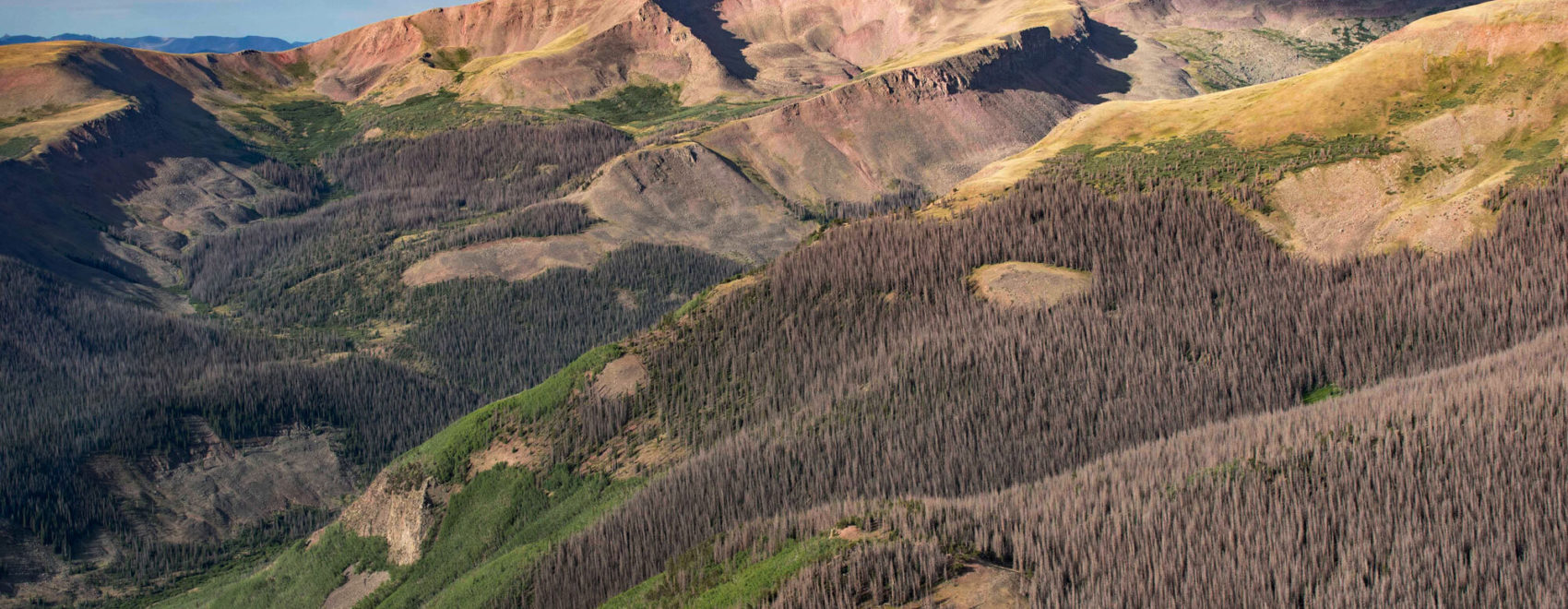Revised operational guide from R2 USFS about safe operations in bark beetle stands.
Due to altered fuel conditions, personnel operating within the bark beetle environment should be aware of the imminent danger presented by dead and dying trees, falling at an increasing rate across a broad forested landscape.
https://gacc.nifc.gov/rmcc/dispatch_centers/r2ftc/documents/BB_IA_Guidelines_2010.pdf
Photo Credit Dan West: Spruce Beetle damage in the San Juan National Forest in 2018.

